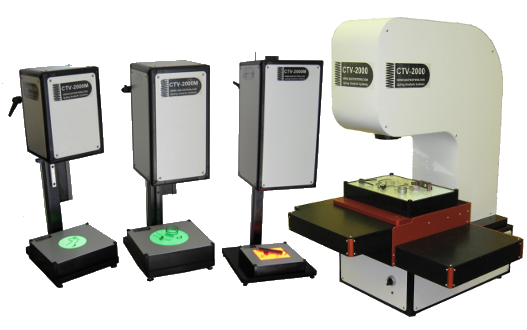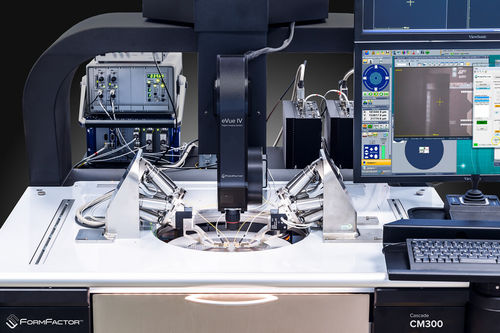The Duty of Optical Measurement Equipments beforehand Width Techniques
Optical dimension systems have actually transformed width, bringing a degree of precision that was when unthinkable. You may be shocked to discover just how these innovations, based upon essential principles like reflection and interference, are applied throughout various industries. Their non-contact abilities not only boost accuracy yet also enhance procedures. As you check out even more, you'll discover how these systems are forming the future of dimension and high quality control.
The Development of Width: A Historic Point Of View
As you explore the background of width, you'll discover that its advancement reflects mankind's mission for precision and standardization. From ancient human beings utilizing body components as devices of dimension to the development of standardized weights and actions, each step reveals our wish for precision. The Egyptians developed the pyramids making use of precise measurements, while the Romans advanced engineering with their sophisticated measuring tools.
During the Renaissance, scientific innovations shifted the emphasis towards more empirical approaches, leading the way for modern assessment. The introduction of the statistics system in the late 18th century noted a substantial landmark, establishing global requirements. Throughout the 20th century, technological innovations even more transformed assessment, making it possible for extremely accurate dimensions in various fields.
Today, width remains to progress, incorporating digital technology and automation. This history highlights not simply the relevance of measurement however likewise our unrelenting search of enhancing precision and uniformity in our significantly complicated world.
Principles of Optical Measurement Equipments
Understanding the concepts behind optical measurement systems is crucial for precise lead to width. You'll desire to take right into account basic optical concepts, measurement precision elements, and reliable system calibration strategies. Each of these components plays a crucial duty in guaranteeing your measurements are trusted and precise.
Essential Optical Concepts
While checking out optical measurement systems, you'll run into fundamental optical principles that develop the backbone of exact data purchase. Light acts in foreseeable methods, and understanding these actions-- like diffraction, reflection, and refraction-- is vital for reliable dimensions. You'll use lenses and mirrors to adjust light and focus it onto your target, making certain accuracy in your analyses. In addition, the wave nature of light enables interference patterns, which can enhance dimension resolution. Polarization can also play a vital function in distinguishing signal from noise, improving the quality of your outcomes. By mastering these principles, you'll be outfitted to take advantage of optical technologies efficiently, leading the means for developments in metrology and guaranteeing your dimensions are both trusted and repeatable.
Measurement Precision Aspects
To accomplish high dimension precision in optical systems, a number of variables enter into play, affecting the integrity of your results. The quality of the optical elements matters considerably. Premium lenses and detectors decrease aberrations and sound, ensuring your dimensions are specific. Second, environmental conditions like temperature level and humidity can affect measurements, so preserving a secure environment is vital. Third, the placement of the optical system is crucial; even minor misalignments can lead to substantial errors. Lastly, the wavelength of light utilized impacts the resolution and accuracy of your measurements. By attending to these factors, you can enhance the total performance of your optical measurement systems, causing even more precise and reliable lead to your width applications.
System Calibration Methods
Accomplishing high measurement accuracy is just part of the formula; proper system calibration methods are equally important in optical dimension systems. To ensure your system provides reputable outcomes, you should on a regular basis calibrate it utilizing standard recommendation products. Begin by changing the optical components, like lenses and mirrors, to lessen methodical errors. Next off, utilize recognized measurements to validate the system's output and make required modifications. It's also crucial to represent environmental elements-- temperature level and humidity can influence dimensions. Execute a regular calibration routine to maintain uniformity with time. Finally, record all calibration treatments and outcomes; this will assist you track performance and address any type of drift in precision. With these methods, you'll enhance the dependability of your optical measurement system.
Secret Technologies Behind Optical Measurement
Optical dimension systems rely on a number of vital modern technologies that improve precision and efficiency in width. One crucial technology is interferometry, which uses the interference of light waves to determine tiny variations and surface abnormalities with extreme accuracy. You'll likewise locate laser scanning systems, which capture comprehensive 3D information of things promptly, making them very useful for dimensional evaluation.
Furthermore, CCD and CMOS sensors play a significant role in transforming light right into electric signals, permitting high-resolution imaging and accurate measurements. Advanced formulas for photo handling additionally enhance measurement accuracy by assessing data in actual time, filtering system out sound and boosting functions.
Ultimately, fiber optics give adaptability and the ability to gauge in hard environments while keeping signal integrity. By leveraging these innovations, you can attain exceptional cause your width tasks, guaranteeing that your measurements are both reliable and accurate.
Applications of Optical Dimension in Industry
As markets increasingly require accuracy and effectiveness, the applications of optical dimension systems have actually come to be important throughout numerous markets. In manufacturing, these systems aid you keep an eye on measurements and resistances in real-time, making sure quality assurance without time-consuming manual checks. In the vehicle sector, optical dimensions assist in straightening elements with accuracy, boosting security and performance.
In electronics, you're utilizing optical methods to check minute attributes on motherboard, spotting defects that could cause failures. The aerospace field take advantage of non-destructive screening methods, allowing you to analyze products and parts without jeopardizing their honesty.
Optical dimension additionally plays an important role in textiles, guaranteeing fabric measurements fulfill exact specs. optical measurement systems. With their ability to offer high-resolution data rapidly, these systems empower you to make informed decisions, improve procedures, and ultimately drive advancement across your sector
Enhancing Precision and Efficiency in Dimensions
When you think of enhancing accuracy in measurements, precision in your top article dimension methods is essential. By enhancing these procedures, you can achieve quicker results without sacrificing high quality. Allow's explore exactly how embracing innovative optical measurement systems can elevate both precision and efficiency in your work.
Accuracy in Dimension Methods
Accuracy in dimension techniques is vital for achieving reputable outcomes in width, especially because small discrepancies can lead to considerable errors. By making use of advanced optical dimension systems, you can boost the accuracy of your dimensions. In addition, precise measurements allow you to preserve quality control, making certain that products satisfy rigid specs.
Simplifying Measurement Procedures
To enhance precision and efficiency in measurements, improving your dimension procedures is important. Start by taking on optical measurement systems that give real-time information, decreasing the time invested in hand-operated recording. These systems typically integrate perfectly with existing software, enabling you to automate data collection and evaluation.
Following, systematize your measurement protocols. By executing constant treatments, you lessen variability and enhance repeatability. Do not forget to frequently calibrate your equipment to guarantee its precision.

The Impact of Optical Dimension on R & D
As researchers endeavor to push the boundaries of innovation, optical measurement systems have become indispensable devices in the growth procedure. These systems provide you with exact, real-time data that enhances your capacity to evaluate complex products and frameworks. In numerous areas, from biotechnology to aerospace, you depend on optical measurements to enhance styles and boost product efficiency.

With high-resolution imaging and non-contact approaches, you can reduce sample disruption, permitting even more precise outcomes. This capability to catch minute information accelerates your R&D cycle, allowing you iterate styles rapidly and efficiently. Optical dimension fosters partnership throughout disciplines, as the data produced is frequently quickly interpretable and shareable.
Ultimately, integrating optical dimension systems into your research study not only enhances efficiency but additionally grows your understanding of the phenomena you research. By leveraging these sophisticated techniques, you're far better geared up to innovate and remain ahead in a competitive landscape.
Future Fads in Optical Measurement Systems
With the rapid advancement of innovation, you're likely to see significant shifts in optical dimension systems that will redefine their application across numerous markets. You'll see a move towards raised automation and integration of expert system, enabling for real-time information analysis and boosted precision. Miniaturization is another fad; small tools will certainly allow measurements in tighter areas, making them excellent for fields like aerospace and biomedical applications.
Anticipate to see systems that can run in tough settings, supplying trusted measurements in extreme conditions. As these modern technologies assemble, you'll locate that optical measurement systems not only boost accuracy but likewise streamline process, inevitably driving advancement and efficiency in your jobs.
Frequently Asked Questions
How Do Optical Measurement Systems Compare to Typical Dimension Techniques?
Optical measurement systems use higher precision and faster results contrasted to typical methods. You'll locate they catch even more data factors precisely, minimizing human error and increasing dependability, making them a recommended selection in different applications.
What Industries Advantage Many From Optical Measurement Equipments?
You'll locate sectors like aerospace, vehicle, and electronic devices profit most from optical Visit Website measurement systems. These industries depend on specific dimensions to ensure quality and efficiency, improving performance and lowering prices with sophisticated innovation.

Are Optical Dimension Systems Expensive to Execute?
Optical dimension systems can be expensive to execute, yet their precision and effectiveness typically justify the price. Spending in such innovation can cause substantial lasting cost savings and enhancements in high quality across various applications.
What Abilities Are Needed to Operate Optical Dimension Systems?
To run optical measurement systems, you'll require strong logical abilities, interest to detail, and efficiency in software application devices. Experience with optics and an understanding of measurement concepts will likewise enhance your performance and efficiency.
Just How Do Ecological Variables Impact Optical Measurements?
Environmental variables like temperature, moisture, and air quality can misshape optical measurements. You'll observe variants in precision due to light disturbance or refraction. optical measurement systems. Maintaining stable problems is article necessary for trusted and precise optical measurement results
Final thought
In summary, optical measurement systems are transforming width by giving unrivaled precision and effectiveness. As you explore future patterns, you'll see how the assimilation of AI and automation will proceed to boost dimension techniques, driving innovation and boosting high quality control.
Achieving high measurement precision is just part of the equation; proper system calibration methods are just as vital in optical measurement systems.When you think about boosting accuracy in measurements, precision in your measurement techniques is vital. By making use of advanced optical measurement systems, you can boost the accuracy of your dimensions.To enhance precision and performance in measurements, improving your dimension procedures is important. Just How Do Optical Measurement Solutions Compare to Standard Measurement Techniques?